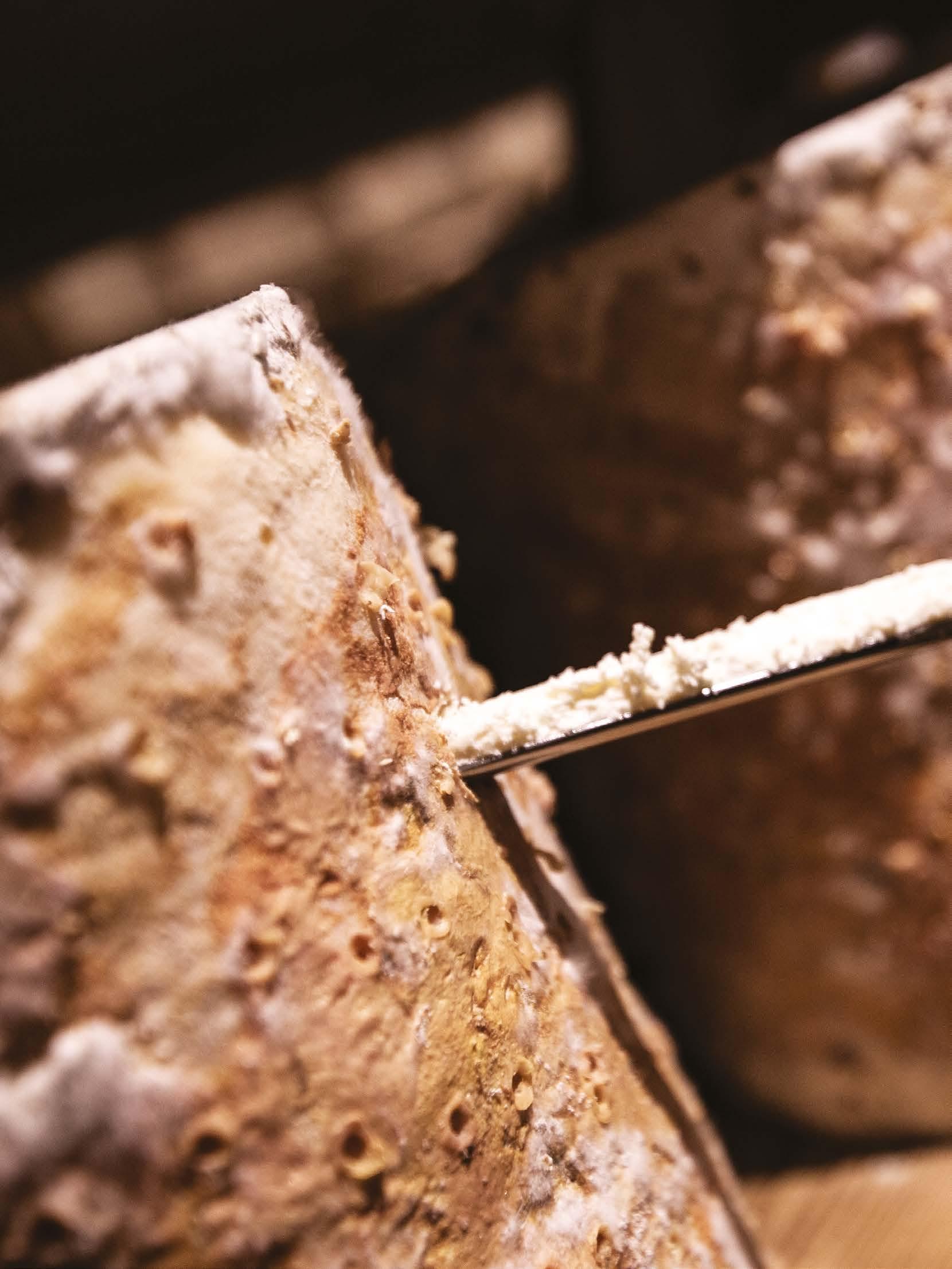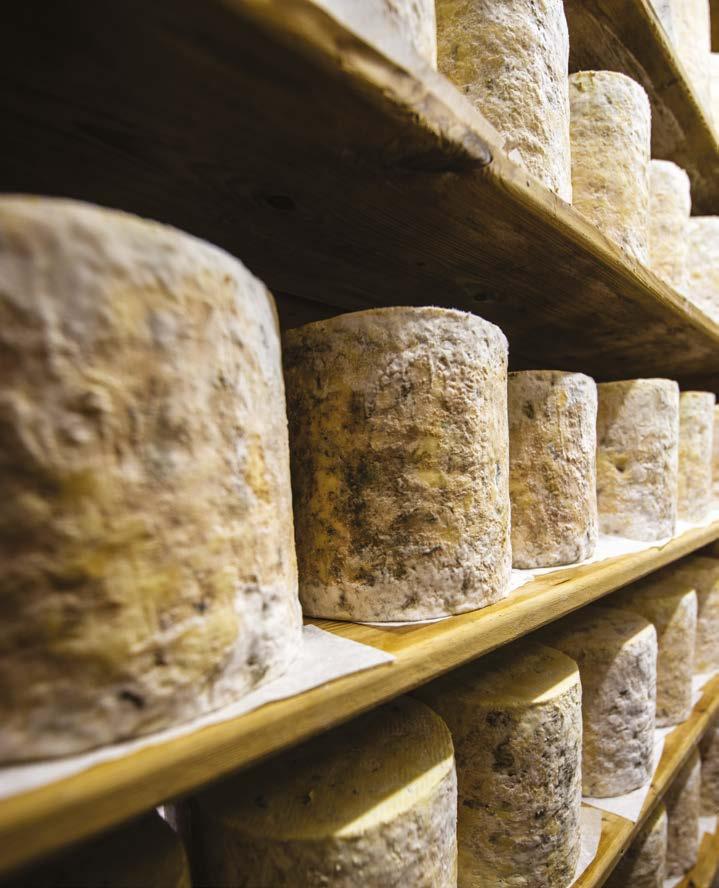
6 minute read
The Big Cheese
Joe Schneider, owner of Stichelton Dairy Ltd talks to Made about
being an advocate of artisan food and how his journey began with the creation of Stichelton, all for the love of cheese.
Just over 25 years ago, he left his native New York to arrive in the UK via the Netherlands, in a bid to make cheese – Stichelton to be precise. J oe Schneider has come a long way to fulfil his dream of making the food he loves.


He still has a strong New York accent, but he and his family are well established in Welbeck, where they have called home for the last 13 years.
“Welbeck has the buildings and the cows and the expertise, I process the milk, make the cheese, and Neal’s Yard Dairy sells it.”
He’d already cut his teeth making feta cheese while in Holland, and in 2006, when looking for somewhere to settle to continue his cheese making, there was no other choice for him but England.
“When I got into cheese making I looked around to see who was doing the most interesting things in cheese and it was Britain hands down,” explains Joe.
Looking for somewhere to make his cheese, Joe settled at the Welbeck Estate, which had a steady supply of milk from its heard of cows.
Stichelton cheese, is an unpasteurised, Stilton-style cheese, that sells across the UK and abroad. It’s the creation of Joe and his business partners at Neil’s Yard Dairy in London.
Today, he and his small team, produce about 50 tonnes of the cheese, most of which is sold through Neal’s Yard Dairy in London, and the remainder through Welbeck Farm Shop.
“Myself and the owner of Neal’s Yard had this idea of making a traditional Stilton with raw milk and so I needed to find a farm that was based in the right geographical area and that’s how I found Welbeck,” says Joe.
As today's Stiltons are all pasteurised, the cheese could not be named a Stilton, this is how the name Stichelton came about. And Joe is very hands-on, making around 80 per cent of the cheese himself. Cheese making can be tricky, but it’s the whole process that he enjoys.
“It’s a craft. Your materials are not always the same, so the craftsmanship is in understanding how to react to the changing material, because every day is different, because the cows could be in some other paddock, or it’s a different time of year – even though the milk looks the same all the time, it is constantly different, and you have to be able to know how to work with it.”
Each vat of milk contacts two and a half thousand litres of milk.
“We start with a vat of raw milk, straight from the farm, so its not even cooled – it comes straight from the cow,” says Joe.
“We then need the milk to be around 29 degrees – bacteria want two things, heat and food, so milk is the food in this case. We put a very tiny amount of starter culture in, which is a mix of lactic acid and bacteria that cheese makers add to get the acidity going, because good acidity is key to cheese making.
“Cheese making can be completely boiled down to two processes, removing moisture and creating acidity – that’s it. From parmesan to a runny brie, it’s the same thing, one has more moisture one has lower acidity, one has less moisture one has more acidity.

“So we add this starter culture to our milk, then we add something called rennit, an enzyme that sets the milk and then curds are formed. This is cut by hand to create the curds and whey.”
The distinctive blue veins that run through the cheese are created firstly through the introduction of penicillium, which needs air to breath, so it remains dormant until the cheese is at a certain maturity when it is pierced to allow air in, which wakes up this blue penicillium mould, and then the ‘blueing’ process begins.
“This blueing crates the taste and texture,” says Joe. “A stichelton cheese, when it is very young, is crumbly and acidic, you wouldn’t recognise it. It is the blue mould that breaks it down into that creamy texture. But then also we get the flavours with this.”
The maturing time of the cheese varies throughout the year depending on the season. In the summer the milk is lower in fat and the cheeses are harder and firmer and they take longer to break down - around five months. The cheese Joe makes in the late summer and autumn, will have a very high fat, they break down very quickly, they have very different flavours and are sweater, these will take between three to five months to mature.
The cheeses don’t always mature in order so Joe is constantly checking the stored wheels to ensure when they are ready. There is a peak point at which he wants the cheese to reach, any longer and unwanted bitter flavours are introduced. At any one time they have thousands of wheels of cheese maturing, so it can be a long process.
Joe is a real advocate of artisan food and its production value and says we should be taking note of what our grandparents would have done. “Our grandparents would certainly have spent much more of their income as a percentage on their food and they would have had a different assortment on their table. They would have had meat that they knew where it came from, probably went to a butcher to get it. They would have had real veg, farmhouse cheese from down the road.
“When we do the farm market at the farm shop, some of the older customers often come up to us and say ‘wow, that reminds me of what it used to taste like’,”
Joe says there has been a ‘war of attrition’ within supermarkets and some of the larger producers.
“They changed the game to make the food cheaper, but I feel we’ve lost something in this. Food is a human experience. If we sat down at a table with our friends with real food that we understand and it delivers real flavour and makes us feel better, that’s got to be better than having an indifferent ready meal. It may have nutrition in it, but it doesn’t augment your human experience at all.”
Joe and his team have no plans to relocate or expand what they do. His artisan approach to making cheese is his passion and is what his whole business is built on.
“We are a small business and we sell everything we make. I don’t want to get any bigger – or much bigger, cause I don’t want to be the guy who sits at his desk looking at spread sheets; I want to make cheese. I make 50 tonnes a year and we sell it all – some years we’re even short. People want more so that’s good.”








